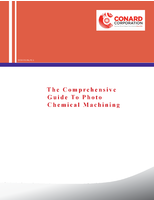IPC Battles for Science and Facts in EU BFR/RoHS legislation.
Share:
Press Release Summary:
IPC is actively refuting statements, published by Swedish non-governmental organization, that contains information about brominated flame retardants (BFRs). Called incomplete and misrepresentative of electronics industry, "Electronics Without Brominated Flame Retardants and PVC - a Market Overview" contains misleading statements about environmental and health concerns associated with BFRs. In short, it is questioned whether BFRs should be removed just because they can be removed.
Original Press Release:
IPC Continues Battle for Science and Facts in EU Legislation
BANNOCKBURN, Ill., USA - In response to the report, "Electronics Without Brominated Flame Retardants and PVC - a Market Overview," issued by a non-governmental organization (NGO) based in Sweden, IPC - Association Connecting Electronics Industries® is actively refuting statements published in the report.
The report, released by ChemSec this week, contains information that is misleading, incomplete, and misrepresentative of the electronics industry. The report's release coincides with the European Union's review of the Restriction of Hazardous Substances (RoHS) Directive. Amendments have been introduced in the EU Parliament to restrict the use of brominated flame retardants under the RoHS Directive.
In refuting the report, IPC is continuing its efforts to seek revisions to the RoHS Directive that are "based on science and result in genuine environmental improvements," says Fern Abrams, IPC director of environmental policy.
ChemSec's report, which claims that industry is making wholesale movements away from brominated flame retardants (BFRs), contains misleading statements about the environmental and health concerns associated with BFRs. While some BFRs, such as Polybrominated Biphenyls (PBBs), have been identified as toxic and have been withdrawn from the market, other BFRs, such as Tetrabromobisphenol-A (TBBPA), have been safely used in electronic products for decades. The World Health Organization and the European Commission Scientific Committee on Health and Environmental Risks (SCHER) conducted separate, comprehensive scientific assessments of TBBPA and both found TBBPA to be safe for human health and the environment.
"While the report intends to show that it is technically feasible to remove BFRs from products, it does not provide indication of any environmental benefit in doing so," says Abrams. The report also fails to identify the alternative flame retardants used and whether they are better for human health and the environment than the BFRs they are intended to replace. Abrams adds, "We reject the report's implication that the sheer ability to remove BFRs from a specific product proves that the action is beneficial."
Abrams went on to say that the ability of one electronics company to remove BFRs from a product does not mean that every electronics company is capable of removing BFRs. While some major consumer products OEMs have made the commitment to remove BFRs and PVC from certain products, companies have explicitly stated that the removal of all BFRs and PVC is contingent upon viable alternatives that do not compromise the functionality, safety, and reliability of their products.
While IPC acknowledges, as ChemSec does on its Web site, the importance of "highlighting the risks of hazardous substances," it does not support ChemSec's need to "speed up legislative processes," at the cost of sound science and true environmental benefit. IPC continues to lobby to ensure the RoHS revisions process reflects the needs of the electronics industry and is based on sound science, most recently by contacting a number of influential Members of the European Parliament (MEPs) regarding proposed amendments to the RoHS Directive. IPC's white paper, "Recasting the RoHS Directive: An Opportunity to Solidify its Scientific Basis in Support of Comprehensive Environmental Regulation," advocates for a revised RoHS to be based on sound science and fully aligned with the REACH methodology for substance restrictions.
About IPC
IPC (www.IPC.org) is a global trade association based in Bannockburn, Ill., dedicated to the competitive excellence and financial success of its 2,700 member companies which represent all facets of the electronics industry, including design, printed board manufacturing, electronics assembly and test. As a member-driven organization and leading source for industry standards, training, market research and public policy advocacy, IPC supports programs to meet the needs of an estimated $1.7 trillion global electronics industry. IPC maintains additional offices in Taos, N.M.; Arlington, Va.; Garden Grove, Calif.; Stockholm, Sweden; Moscow, Russia; and Shanghai and Shenzhen, China.




